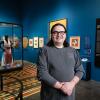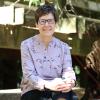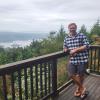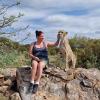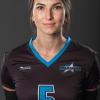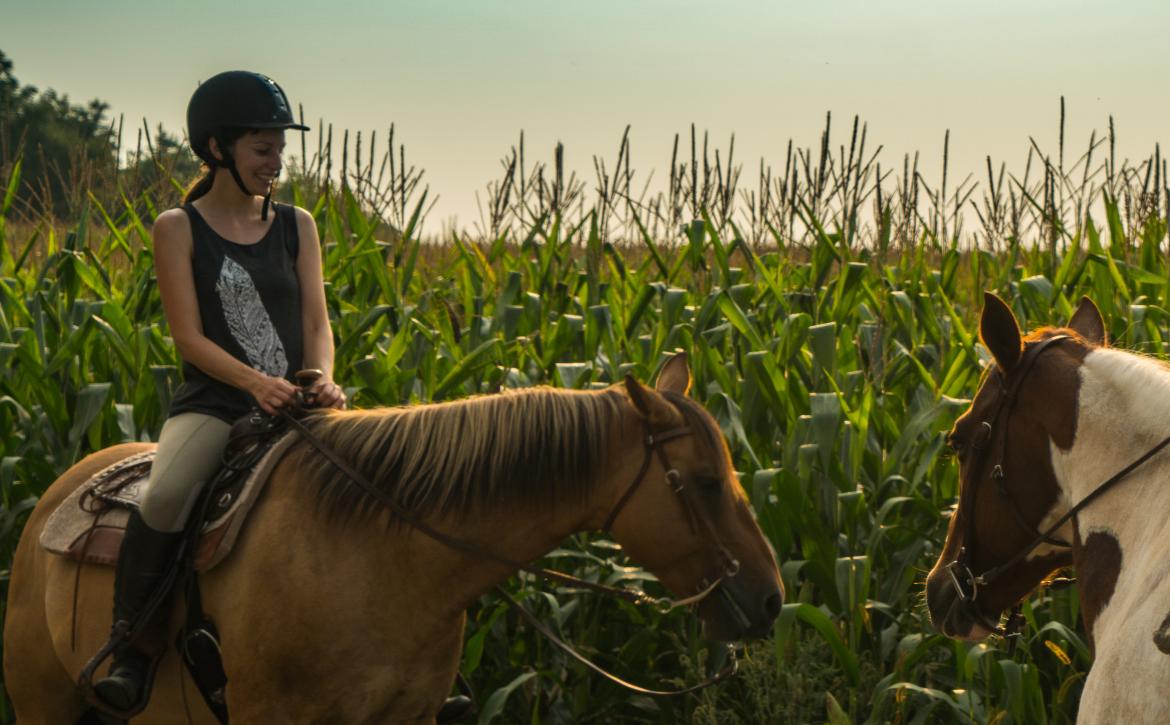
Anastasia riding Gus, the horse. Photo Credit: John Fulton
January 25, 2018 - 1:30pm
Horses help in healing old wounds
No amount of talking or medication can heal some wounds. It’s when people discover this that they tend to find Anastasia Hirst and Equine Facilitated Wellness (EFW).
Hirst enrolled in Vancouver Island University’s (VIU’s) Child and Youth Care program so she could continue her work in EFW. When she graduated, she was already employed at Generation Farms, which had a program for children and youth. She wanted to use an education-based approach to help her charges even more.
“Most youth would come to us when their social worker determined no traditional modalities, usually various forms of talk therapy, were working,” Hirst explains. “We were basically the last resort.”
Hirst has been an avid horse enthusiast for as long as she could remember, and knows firsthand the power of working with such large animals. It was no surprise to her to see otherwise unreachable children open up, transform and thrive in the presence of horses.
“Horses don’t judge, they don’t bring any preconceived notions of how you should be when you spend time with them. They just meet you where you are at,” she says. “Horses don’t judge emotions as good or bad like humans do. They teach us to be congruent by walking away when our emotions don’t match our body language. People have major breakthroughs when working with them when they own their discomfort, fear or frustration.”
The basic format of Hirst’s work is a gradual increase in closeness for the individual and the horse. During the first meeting, the horse is usually on the other side of a fence, and over time human and horse become closer and closer. This is one of many EFW approaches.
Time and time again, Hirst watched as youth dealing with challenging personal dynamics and trauma started to thrive.
“They would stop self-harming. Go back to school. Start making connections with peers,” she says. “Equine therapy works because it allows people to develop a sense of mastery. They are so large you have to be immediately present in your body, and for some people they activate fear, so the therapy provides a way to deal with the physical reactions – increased heart rate, breathing and more – so people have a chance right there to work on grounding and gaining control in a safe way.”
As her passion for Equine Facilitated Wellness flourished, Hirst found herself wanting to get the word out about this type of therapy. Her partner, John Fulton, is a photographer and videographer. They decided to buy a van and follow the story of EFW as far across North America as they could make it. Their plan was simple: to connect with experts and discover their most compelling stories, then tell those stories through the eyes of the healing individual.
They made it a long way - 18,000 kilometres in just three months. All the way across Canada, and almost all the way across the United States. When they arrived in Phoenix, they received some terrible news that crystalized the importance of their journey: Hirst’s father, who had been plagued by mental illness and addiction throughout his life, finally lost his battle and died by suicide.
Anastasia found herself drawing on her education and therapeutic modalities in a way she never expected.
“As a family, we decided to be open and honest about our loss. John and I are both passionate about ending the stigma around mental illness, and the loss of my dad just made us even more passionate,” she says. “Throughout our entire journey, we were treated so well, and welcomed so openly into strangers’ houses and treated like family. Most of these people were dealing with things we were about to face in such a real way. Dealing with these stresses makes you focus on what really matters.”
Hirst and Fulton spent two weeks in Wisconsin living with a family who lost their son to suicide.
To date, Hirst and Fulton have filmed eight episodes, each covering a different person who has used EFW to overcome deep trauma or pain. They have plans to shoot for at least three more months throughout Arizona, California and parts of the Pacific Northwest before they come back home to Gabriola Island.
Hirst credits her time at VIU in the Child and You Care Program with providing her with tools and freedom to pursue her passion her way.
“I basically did every assignment on Equine Therapy. I had the class come out to the farm and try it out, and my professors did everything they could to support me in the direction I wanted to go,” Hirst says. “The Child and Youth Care program, and its inherent values about relationship and community, is the foundation that I built my practice on.”
Every year, the VIU CYC’s department hosts a recruitment and alumni meet and greet event, which is coming up on Wednesday, January 31. To learn more, visit the events page.
For more information on Hirst and Fulton’s documentary project, visit www.equusfilm.org.
Learn more about VIU’s Child and Youth Care programs here.
-30-
MEDIA CONTACT:
Aly Winks, Communications Officer, Vancouver Island University
P: 250.740.6529 | C: 250.618.7930 | E: alyson.winks@viu.ca | T: @VIUNews
Tags: Child and Youth Care | Health and Human Services | Our Alumni

